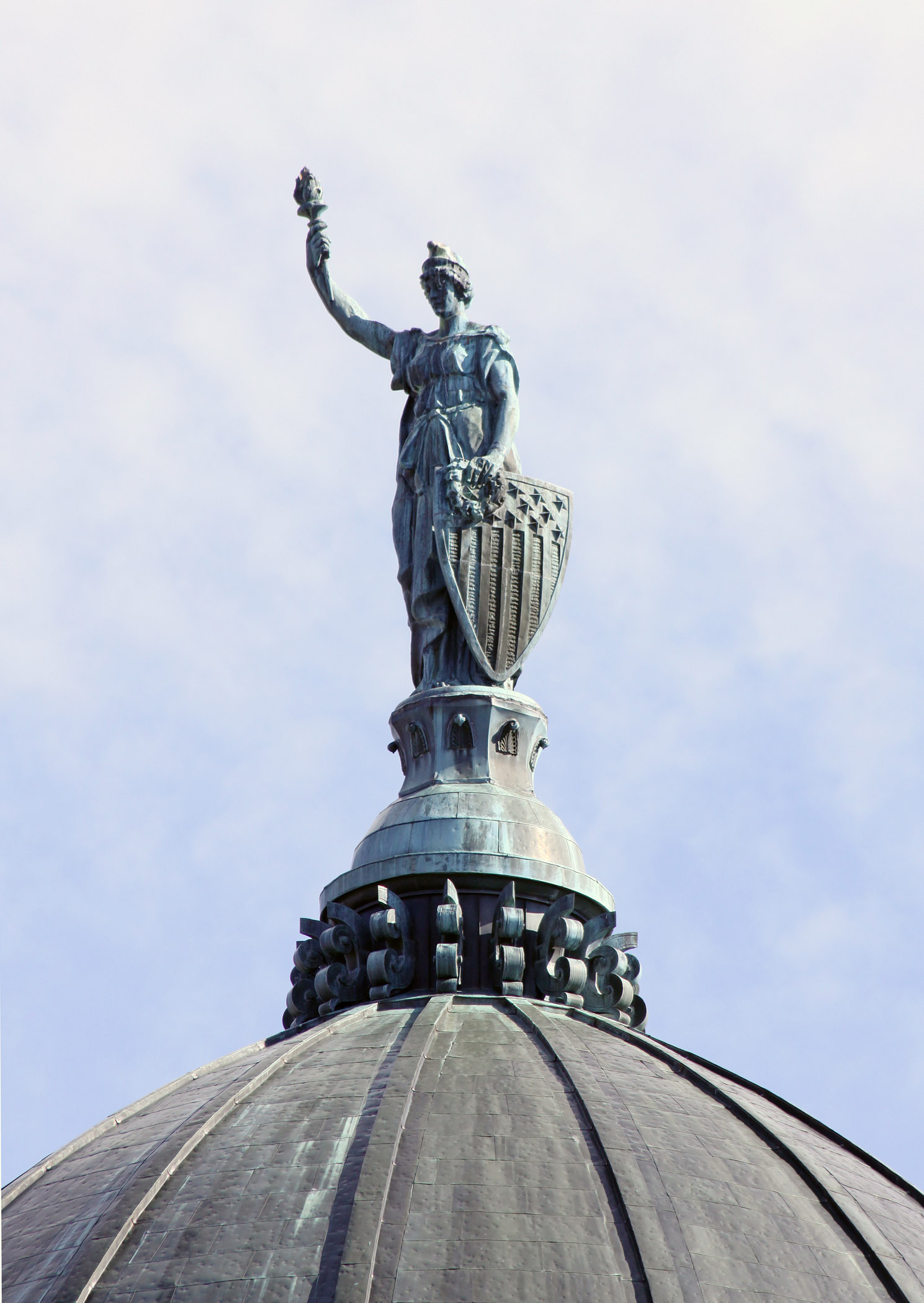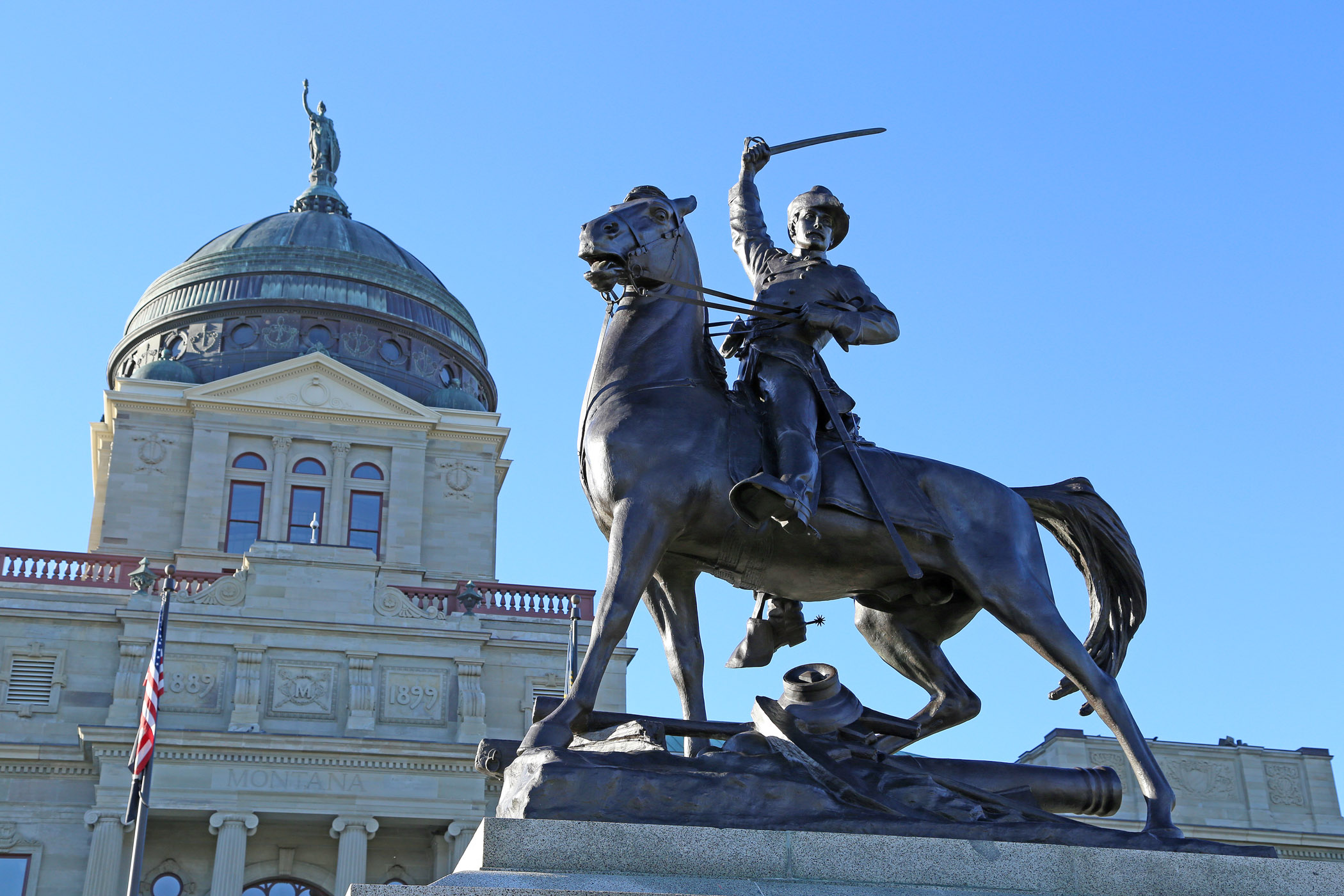
Edward Van Landeghem, copper sheeting over iron framework,
ca. 1901 144” x 42” x 36”, cast by an unidentified Ohio foundry
(Photo: MHS BD 2014-38-004)
Although Montana has stood as a symbol of the state’s dedication to democracy for over a century, its origins were shrouded in mystery for much of its existence. The commission charged with constructing a Capitol for the new state of Montana authorized its creation between 1895 and 1897. When it was discovered that commission members were planning to embezzle money from the project, Governor disbanded the commission, but not before someone destroyed all of the commission’s records. A second commission—established to carry on the work of constructing a much-needed Capitol building—started anew with new building plans, unaware that a statue to top the planned-for dome had already been ordered. The statue’s subsequent arrival in Helena by train was therefore unexpected. Shipping instructions made it clear that the monumental sculpture was intended for the Capitol, but provided no clue as to the identity of the artist or title of his creation. Nonetheless, copper workers installed the statue, unofficially christened Liberty, atop the dome in December 1900. Over one hundred years later, the Montana Historical Society learned details of the statue’s origins when, in 2006, Pennsylvania resident Alice Nagle identified it as the work of her grandfather, Edward Van Landeghem (1865–1955). Van Landeghem was a Belgian-born and European-trained sculptor who immigrated to the U.S., eventually settling in Pennsylvania. In a 1902 interview he described Montana as being “among his favorite works.

by Charles J. Mulligan, bronze, 1905, 108” x 72” x 36”, cast by the American Bronze Foundry, Chicago
Granite pedestal designed by Charles Lane and constructed by James Welch and Company, Butte, 120” x 153” x 81”
(Photo: MHS BD 2014-38-004)
Thomas Francis Meagher (1823-1867) was an Irish revolutionary and Union brigadier general in the American Civil War. Known as “Meagher of the Sword,” he was exiled from Ireland to a British penal colony in Tasmania in 1848. Following his 1852 escape from Van Diemen’s Land (as Tasmania was then known), he landed in New York City, where he gained an enthusiastic following as an orator and editor of the Irish News. He arrived in Montana in 1865, having been appointed as Territorial Secretary. Over the course of the next two years he twice served as Acting Territorial Governor, drawing loyal supporters and vocal detractors in almost equal numbers. He died under mysterious circumstances in Fort Benton on July, 1, 1867. Scholars still debate whether he was murdered by political enemies or died accidentally. Irish-born Chicago sculptor Charles J. Mulligan (1866-1916) created Meagher’s equestrian statue on the front lawn of the Montana Capitol, which is as much a tribute to the many Irish immigrants who made Montana their home as it is to Meagher himself. The Meagher Memorial Association raised twenty thousand dollars by public subscription to pay for the statue, which was dedicated on July 4, 1905, before a cheering crowd of over 1,500 people.
